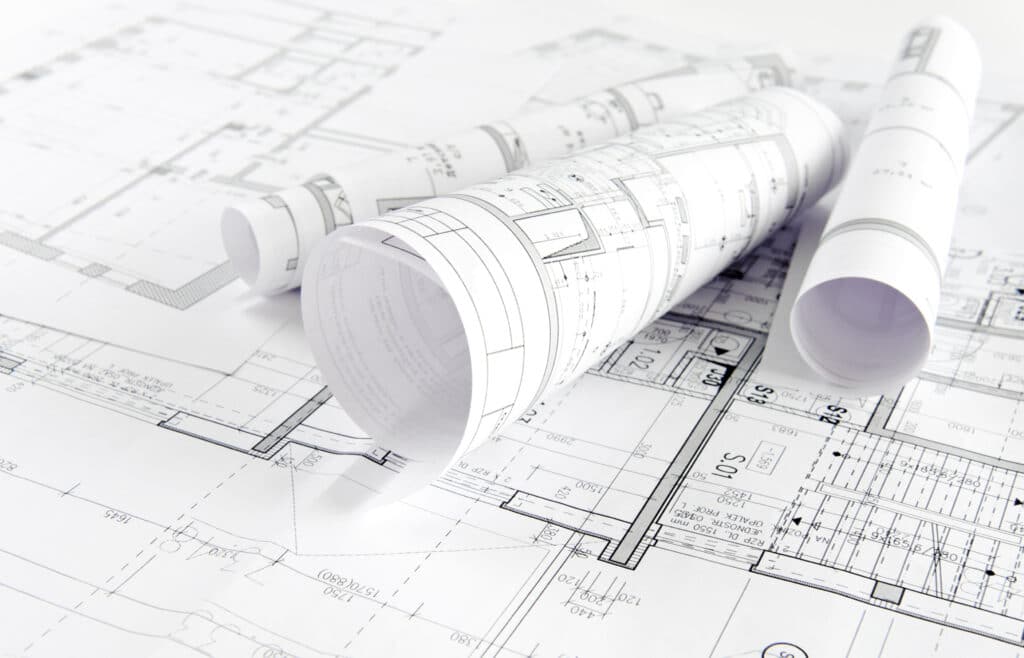
BCIN and Permit Drawings: What You Need to Know
Navigating the construction process requires understanding key regulatory requirements, such as permit drawings and the Building Code Identification Number (BCIN). Both play a pivotal role in ensuring your construction project meets local and provincial building codes, allowing for safe and legal construction.
What is BCIN?
BCIN, or Building Code Identification Number, is a credential issued by the Ontario Ministry of Municipal Affairs and Housing. It is assigned to individuals and firms qualified to submit permit drawings, ensuring they meet the standards set by the Ontario Building Code.
Who Needs It?
- Architects, engineers, or designers who prepare and submit permit drawings.
- Anyone offering design or inspection services related to construction.
Without a BCIN, you cannot legally submit permit drawings for approval in Ontario, as this credential validates your ability to produce code-compliant designs.

What Are Permit Drawings?
Permit drawings are detailed architectural, structural, and engineering plans required to get approval from your local building authority. These plans ensure that your construction complies with local and provincial codes, including zoning laws and safety regulations.
Permit drawings must be prepared by a BCIN-qualified professional unless exempt by law. This guarantees that the person creating the drawings has the proper expertise and certification.
Why Are Permit Drawings Important?
Both BCIN holders and permit drawings play critical roles in the construction approval process. Here’s why permit drawings are essential:
- Regulatory Compliance: Ensure the project adheres to Ontario Building Code standards, safeguarding public safety and legal requirements.
- Approval Requirement: Permit drawings are a prerequisite for obtaining building permits, without which construction cannot legally begin.
- Construction Guidance: Provide clear instructions to contractors, preventing construction errors and delays.
Components of Permit Drawings
When a BCIN-qualified professional prepares permit drawings, they include several key elements:
- Site Plan: Maps the location of the project, including property boundaries and existing structures.
- Floor Plans: Details room layouts, dimensions, and locations for doors and windows.
- Elevations: Exterior views showcasing building height, materials, and design.
- Sections and Details: Cross-sectional views showing construction methods and structural details.
- Structural Plans: Includes specifications for beams, columns, and other load-bearing elements.
- Mechanical, Electrical, and Plumbing (MEP) Plans: Layouts for systems such as HVAC, electrical, and plumbing.
How the Permit Drawing Process Works
Here’s an overview of the process, from design to permit issuance:
- Initial Design: Concept creation based on client feedback.
- BCIN-Certified Preparation: Once the design is finalized, a BCIN-qualified professional prepares the detailed drawings.
- Submission to Authorities: The drawings are submitted to the local authority, either by the client or by a firm such as ours for an additional fee.
- Review and Approval: The building authority ensures the drawings comply with building codes and zoning laws.
- Permit Issuance: Once the drawings are approved, permits are issued, allowing construction to begin.
Why You Need BCIN for Permit Drawings
In Ontario, a BCIN number is required for most permit applications unless the drawings are submitted by a licensed architect or professional engineer. The BCIN system ensures that individuals submitting permit drawings are qualified and meet the minimum competency standards for design and inspection.
Without a BCIN, it’s illegal to submit drawings to municipal building authorities. Using a designer with a valid BCIN ensures that your plans meet all necessary regulatory requirements, making the approval process smoother and faster.
The Role of VS Design Studio in BCIN and Permit Drawings
At VS Design Studio, we specialize in creating BCIN-compliant permit drawings that meet all Ontario Building Code requirements. Our team of certified professionals ensures that your project complies with local regulations, from initial design to the final approval.
We handle the entire permit drawing process, from preparing detailed site plans to submitting them to the building authority on your behalf. Whether it’s a new construction, renovation, or an addition, we ensure a hassle-free experience with quick approvals and smooth project execution.
Key Benefits of Working with VS Design Studio
- Certified Professionals: We hold valid BCIN credentials, ensuring that all designs meet the necessary legal standards.
- Comprehensive Service: From design to approval, we manage the entire permit drawing process.
- Streamlined Approvals: With our expertise, you can expect faster approvals and fewer delays in your project timeline.
Understanding the role of BCIN and permit drawings is essential for any construction project in Ontario. By ensuring regulatory compliance, streamlining approval processes, and providing detailed guidance for contractors, both BCIN and permit drawings pave the way for a successful construction project. Let VS Design Studio guide you through this process with precision and expertise.
Frequently Asked Questions(FAQs)
What is BCIN, and why do I need it for my project?
BCIN (Building Code Identification Number) is a certification for professionals submitting permit drawings. It ensures your project meets Ontario Building Code requirements.
Can I submit permit drawings without a BCIN?
No, unless you are a licensed architect or engineer, a BCIN is required to legally submit permit drawings in Ontario.
Who can prepare my permit drawings?
Permit drawings must be prepared by a BCIN holder or a licensed architect/engineer.
What happens if my permit drawings don’t comply with building codes?
The local authority will request revisions, delaying your project until compliance is achieved.
What is the role of permit drawings in construction?
Permit drawings ensure that your project complies with legal standards and provides a roadmap for contractors.
How long does it take to get building permit approval?
The approval time varies depending on the complexity of the project and the local authority’s review process. Using a BCIN-qualified professional can help speed up approvals.


No comment yet, add your voice below!